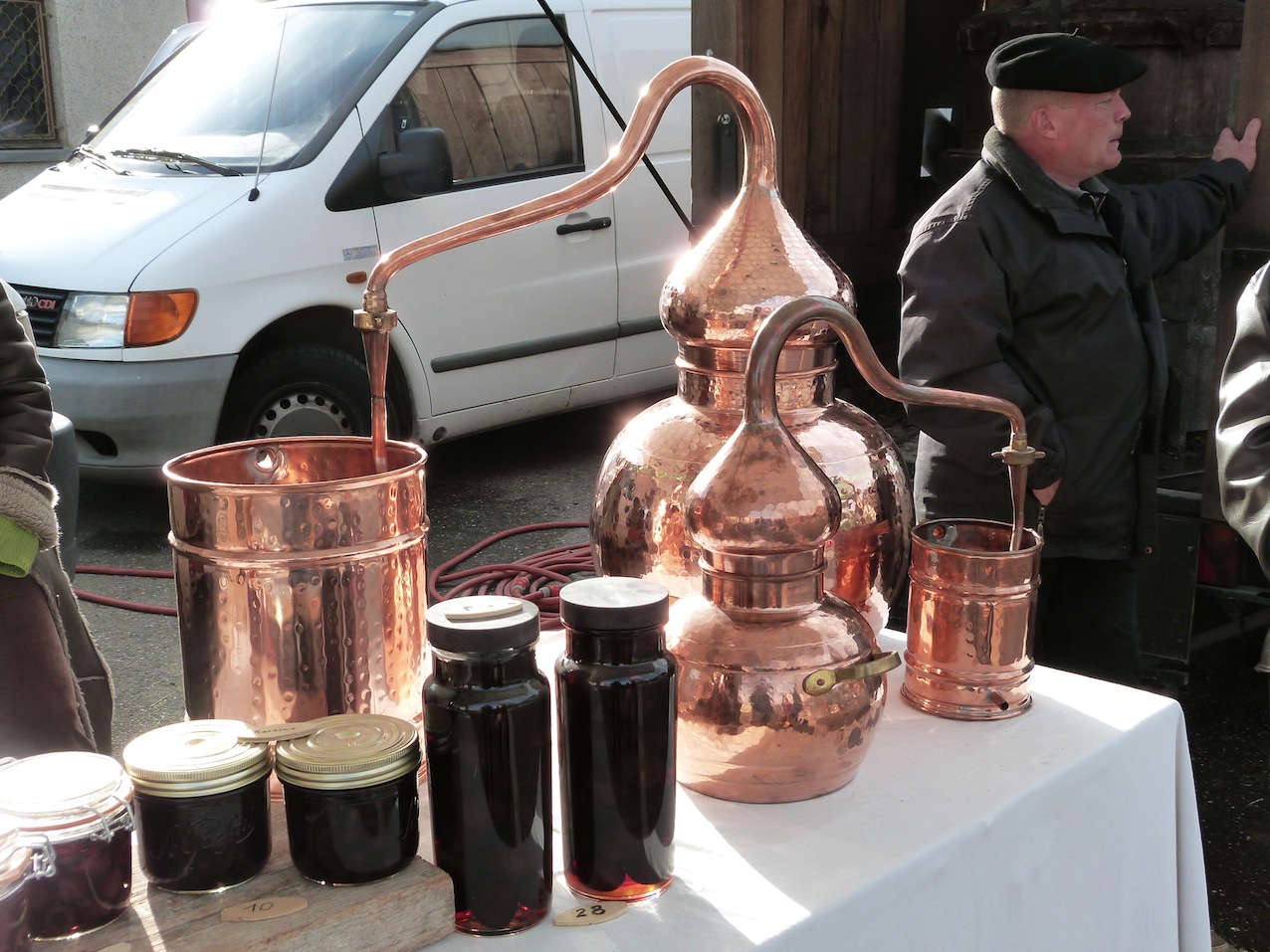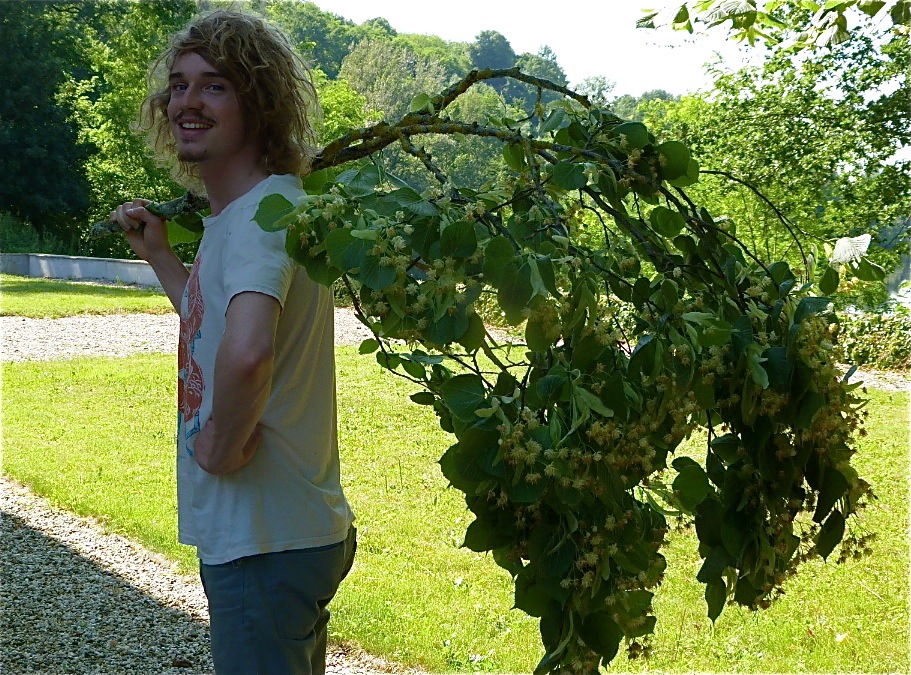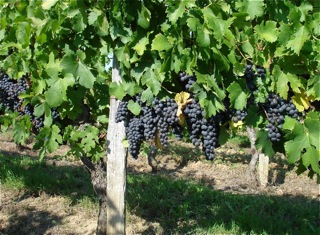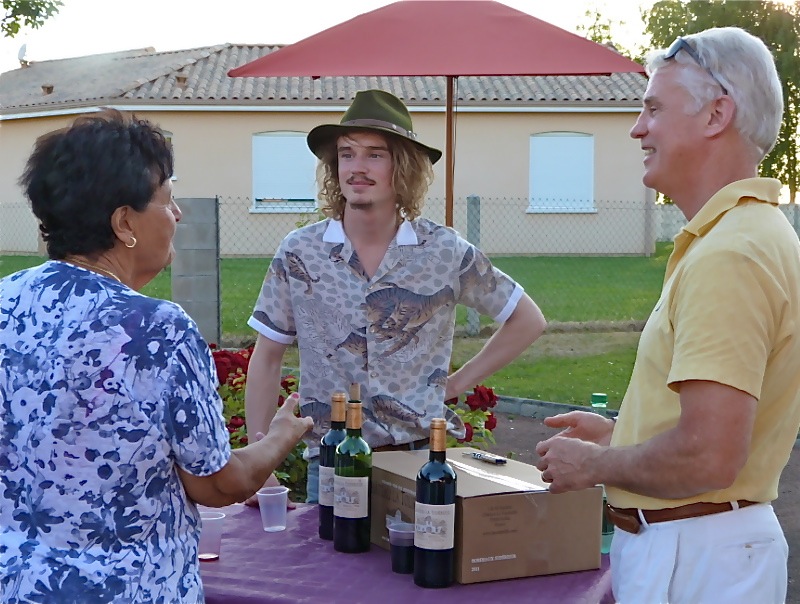 All night long I dreamed about tree roots. Specifically the fine little hairs that reach down into the rhizosphere and commune with the surrounding micro organisms in the soil. Since it’s the season to plant trees, perhaps it was subconscious and conscious trying to fashion an equation: desire for luscious boughs of future fruit + fascination with the mysterious symbiosis going on below the surface of the earth.
All night long I dreamed about tree roots. Specifically the fine little hairs that reach down into the rhizosphere and commune with the surrounding micro organisms in the soil. Since it’s the season to plant trees, perhaps it was subconscious and conscious trying to fashion an equation: desire for luscious boughs of future fruit + fascination with the mysterious symbiosis going on below the surface of the earth.
With two harvests behind us, we can lift our eyes to acknowledge the old fruit orchard. It was planted decades ago by some wise person, in the middle of the vineyard.  Before this era of agricultural “mono cultures” the elders knew something about the value of growing varied plants in close proximity. Much to our sadness, we found the orchard had fallen victim to years of neglect and was being smothered by thorn bushes and ivy.
Before this era of agricultural “mono cultures” the elders knew something about the value of growing varied plants in close proximity. Much to our sadness, we found the orchard had fallen victim to years of neglect and was being smothered by thorn bushes and ivy.
 Mindful of the research about “bio-diversity” and John’s obsession with making jams, we’re now on a resurrection mission. Henri made a first attempt to penetrate the fierce underbrush with scythe and machete. When he gave up, John moved in with a chain saw and I followed with pruning shears.
Mindful of the research about “bio-diversity” and John’s obsession with making jams, we’re now on a resurrection mission. Henri made a first attempt to penetrate the fierce underbrush with scythe and machete. When he gave up, John moved in with a chain saw and I followed with pruning shears.
What a sight to behold. Gnarled, 60 year old trees buried under a tangle of merciless ivy and tentacles of thorns. We liberated the survivors. Those that suffocated went the way of the chain saw, shedding and spreading their organic matter to make room for new growth.
Those that suffocated went the way of the chain saw, shedding and spreading their organic matter to make room for new growth.
Maybe it’s no coincidence that this dream surfaced on the night we made our pilgrimage to the Conservatoire Vegetal d’Aquitaine in Montesquieu for the annual “Fete de l’Arbre.” www. conservatoirevegetal.com
Cross between an old fashioned County Fair (minus the cotton candy) and a sophisticated venue for disseminating knowledge about indigenous plants, the “Celebration of the Tree” is a day of delicious discoveries. Trees and fruit are just a start – it’s all about “local.” Local seeds, vegetables, honey, artisans, inventions, you name it. And maybe the happiest discovery of all: in our search for indigenous plants, we are not alone. When you consider the amount of food on our tables generated by companies which patent plants that leave behind only sterile seeds – the Conservatoire is something of an oasis. The place was teeming with enthusiastic kindred spirits: people of all backgrounds who are eager to stand against the tide and plant what their grandparents planted.
We came for fruit trees and advice, and like hundreds of others we stood in long lines for expert help from passionate volunteers. Our counselor was a retired local who is committed to the Conservatoire because of the essential role it plays in popular horticulture and education. He confided, ‘I first came here years ago to fulfill a dream – a two day course in grafting. When you have a tree you love sitting happily in your garden for 100 years, what do you do when you have to move?”
We poured out our desires to him and our fears. In a half hour he took us through some basics – the careful selection of trees, bushes, flowers, vegetables and herbal plants that would not only help us make good jams, pretty bouquets, and savoury sauces, but through their symbiotic properties would help colonize (enrich) the soil; beyond this, by attracting birds and bees and the right kinds of bugs, they might also help us make better wine.
In short, he read my mind. I’ve been fascinated by hedges ever since I read Beatrix Potter’s Mrs. Tiggywinkle. Hedges have been out of fashion for a long time, but are now in the news again because they provide homes for many of the little critters we need, from hedgehogs and birds to valiant insects. Today’s “biodiversity hedges” are made from fruit and nut trees and useful bushes, rooted closely together and trimmed as a hedge.
But I’m dreaming for the moment, hedges will come next year. Right now we have our list of 9 fruit trees (including an apple that offers tiny fruit that lasts all winter to feed the birds) and a walnut tree, as well as planting tips, pruning advice, and notes on a dozen plants and bushes to lay in the spaces between the trees to create biodiversity. If we plant 10 trees every December, the orchard will be full again in 4 years.
And then the moment we had been waiting for: walking the fields, finding our trees. To prepare their beds, the Conservatoire lays rows of drains and irrigation pipes and covers them with long rows of mounded sand. Here they place the trees – with bare roots, not the root balls we’re accustomed to in commercial nurseries. And now another advisor, in red apron, cheerful yellow neck scarf and black beret – helps us pluck our trees from the soil. He points to the roots and says we may trim them before planting, but whatever we do – don’t hurt the hairs!
And this is the image of my dream – all these baby trees waiting to be adopted, standing hopeful in their sand cradles, their fragile hairs protected, those fragile hairs so important to their future and ours.
 The moment we got home we watered the roots, set markers and began digging – the trees were eager to get back into their element quickly.
The moment we got home we watered the roots, set markers and began digging – the trees were eager to get back into their element quickly. 
When it got too dark to work, we laid down our spades, rubbed our backs and looked up at the sky.
I see visions of those hairs descending into the soil, stretching out, communing with friendly, microscopic mushrooms, “mycorhizes” which can explore and colonize a thousand times more soil than the roots. These help the plant absorb water, nitrogen, phosporous and other nutritious elements. In return, the leaves, via photosynthesis send down sugars to feed the mushrooms.
What a pleasure, to change the balance in this old orchard from parasitical ivy to symbiotic mushooms. I crumble the earth and pat it gleefully at the rootstock, thinking of all this micro life spreading out further and further underground, under the vines, all over the hilltop, through the surrounding woods and then the prairies beyond. But to see this hidden spectacle, I have to close my eyes and dream.




